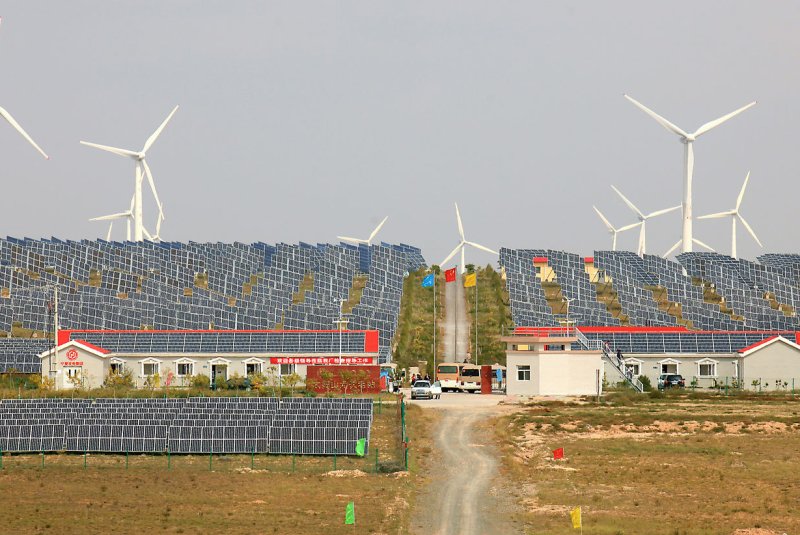New Chinese solar policies could have short-term consequences, but reduce financial burdens, analysis from Wood Mackenzie found. File Photo by Stephen Shaver/UPI |
License Photo
June 6 (UPI) -- A Chinese move to put a cap on solar power developments could lead to short-term shocks, but could help advance a greener economy, analysis shows.
China last week introduced policy that suspends the approval of subsidized power stations and mandates certain prices through competitive auctions.
According to analysis sent to UPI from consultant group Wood Mackenzie, the mandate sent shock waves through the Chinese solar power sector. Small-sized companies could get pushed out of the segment altogether and shares in solar companies dropped 15 percent the days that followed the announcement.
Wood Mackenzie estimated the policy means China can add about 30 gigawatts of solar power capacity to its grid this year, about 30 percent less than initially expected. However, the subsidy decision eases China's financial burdens and, by opening up the market through competitive auctions, the group's analysis revealed expectations of an improvement in quality and efficiency.
"China's latest heavyweight solar PV policy will cause near-term market turmoil but will accelerate achieving grid parity and promote penetration of solar photovoltaic in emerging markets," Wood Mackenzie's principal consultant Frank Yu said.
The International Renewable Energy Agency estimated that 60 percent of all renewable energy jobs are in the Asian economies. For the solar panel industry, China has about 60 percent of the payrolls, representing about 2.2 million employees. China also accounts for 44 percent of the payrolls in the wind energy industry.
By 2040, China will have 30 percent of the new wind and solar power capacity and 40 percent of the global investment in electric vehicles.
President Donald Trump earlier this year signed off on measures imposing a 30 percent duty on imported solar products following review and recommendations from the U.S. International Trade Commission.
The ITC took up the case amid complaints from Suniva, a Chinese-owned company with U.S. manufacturing centers, and SolarWorld, whose parent is in Germany, that cheap solar components from Asia made the U.S. sector less competitive.
The Solar Energy Industries Association, a trade group representing the interests of the solar power industry in the United States, said only a few thousand workers were actually employed making solar panels and the tariffs would eliminate, not create jobs.















